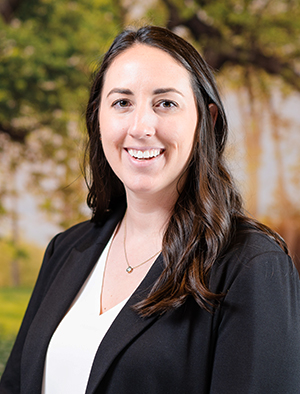
Paige Varner
Scientist, Healthy Communities
Work
Areas of expertise:
Environmental health, federal policy and regulation, cumulative impacts, chemical safety and remediation
Description
As a scientist for EDF’s Healthy Communities program, Dr. Paige Varner’s work involves integrating scientific knowledge on environmental health and toxicology to reduce exposures to toxic chemicals and protect public health.
This involves promoting just and protective implementation of various laws and policies, such as the Toxic Substances Control Act (TSCA), and federal- and state-level cumulative impacts policies.
Further work involves consideration and promotion of assessing risks to chemical and non-chemical stressors cumulatively to protect communities, particularly those most overburdened and at risk, from unjust contamination.
Background
Before joining EDF, Paige was an ORISE Postdoctoral Fellow in the Environmental Protection Agency’s (EPA) Office of Research and Development. During her time at EPA, Paige worked on cumulative impact assessments in communities vulnerable to contamination, climate change, and other social & health impacts.
Prior to her fellowship, she received her PhD in Environmental Engineering and Toxicology at Duke University where she studied bioremediation of organic contaminants in the environment and contributed as a science consultant to a legal case pertaining to toxic contamination in an environmental justice community in North Carolina.
Education
PhD, Environmental Engineering & Toxicology and Environmental Health, Duke University
BS, Marine Biology, College of Charleston
Publications
Weisner ML, Varner PM, Ku IT, Collett Jr. JL, Buck B, and McKenzie LM (2025) Cumulative Human Health Risk Assessment of Regional Ozone and Volatile Organic Compounds from Unconventional Oil and Gas Sites in Colorado's Front Range. Environmental Health Perspectives (preprint), https://doi.org/10.1289/EHP16272
Varner PM, Allemann MN, Michener JK, Gunsch CK (2022) The effect of bacterial growth strategies onplasmid transfer and naphthalene degradation for bioremediation. Environmental Technology & Innovation28:102910.
Varner PM, Gunsch CK (2021) Properties affecting transfer and expression of degradative plasmids for thepurpose of bioremediation. Biodegradation 32: 361-375.
Bippus PM, Kruger-Hadfield SA, Sotka EE (2018) Palatability of an introduced seaweed does not differbetween native and non-native populations. Marine Biology 165(2): 39.
Rivera NA, Bippus PM, Hsu-Kim H (2019) Relative reactivity and bioavailability of mercury sorbed to orcoprecipitated with aged iron sulfides. Environmental Science and Technology 2019(53): 7391-7399.
Addis SD, Formel SK, Kim YJ, Varner PM, Raudabaugh DB, Lefevre E, Bernik BM, Elango V, Van Bael SA,Pardue JH, Gunsch CK (2022) Alterations of endophytic microbial community function in Spartina alternifloraas a result of crude oil exposure. Biodegradation 33:87-98.
Formel SK, Martin AM, Pardue JH, Elango V, Johnson K, Gunsch CK, Lefevre E, Varner PM, Kim YJ,Bernik BM, Van Bael SA (2022) Decay of oil residues in the soil is enhanced by the presence of Spartinaalterniflora, with no additional effect from microbiome manipulation. Frontiers in Soil Science 2:949439.
Sotka, EE, Krueger-Hadfield SA, Baumgartner A, Bippus PM, Destombe C, Duermit E, Endo, Flanagan B,Kamiya, Lees L, Murren CJ, Nakaoka M, Shainker S, Strand AE, Terada R, Valero M, Weinberger F (2018)Combining niche-shift and population genetic analyses predicts rapid phenotypic evolution during invasion.Evolutionary Applications 2018: 1-13.
Duffy JE, Ziegler SL, Campbell JE, Bippus PM, Lefcheck JS (2015) Squidpops: A Simple Tool toCrowdsource a Global Map of Marine Predation Intensity. PLoS ONE 10(11): e0142994.
Latest pieces
-
Cumulative human health risk assessment of regional ozone and volatile organic compounds from unconventional oil and gas sites in Colorado’s front range
Environmental Health Perspectives, May 5, 2025 -
New study identifies health risks during unconventional oil and gas production for those living near wells
Global Clean Air, May 1, 2025 -
Cumulative assessment better estimates the real-world risks chemicals pose on our health
EDF Deep Dives, August 13, 2024










